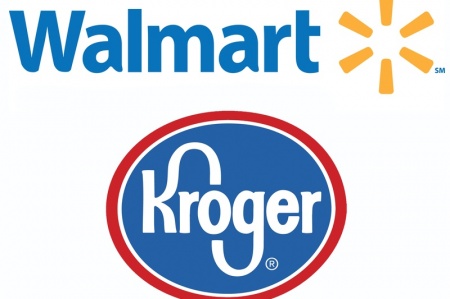To thwart Amazon, Kroger and Walmart lure shoppers with curbside pickup
As Amazon.com looks to upend the U.S. grocery market with home delivery, some veteran supermarket operators are betting on a different strategy: curbside pickup. Americans have long loved the convenience of drive-through service for burgers and coffee. Kroger Co (KR.N) and Walmart Inc (WMT.N) are tweaking that formula for groceries.
The companies have invested heavily in online systems that allow customers to order ahead from their neighborhood store. Workers pick and pack the products, then run them out to shoppers in the parking lot, the grocery version of carry out pizza. For the retailers, the service is cheaper than delivery, because customers do the driving. For shoppers, it means skipping crowds and queues at their local market, and no worries about missing packages or melted ice cream if they are not at home to meet the delivery guy.
New entrants such as meal-kit company Blue Apron and organic food seller Thrive Market are peeling off coveted slices of their business. Amazon (AMZN.O), the nation’s largest online retailer, has amassed an 18 percent share of the $12.6 billion U.S. online grocery market mainly through the sale of packaged goods such as pasta and diapers. It is the largest player in a sector that is expected to grow to $41.7 billion by 2022, according to market research firm Packaged Facts.
But even mighty Amazon has struggled with the trickiest part of the trade: delivering fresh produce, meat, dairy and other perishables. Its AmazonFresh service started more than a decade ago, but has yet to make a major mark.
Amazon is making another run at it with its $13.7 billion purchase of upscale grocery chain Whole Foods earlier this year. Amazon has said little about its plans. But analysts expect it will use Whole Foods’ 450 locations as distribution hubs for home delivery, opening a new front in its campaign to disrupt the $700-billion U.S. grocery industry.
Old-line players are responding with some new moves of their own. Kroger and Walmart are experimenting with delivery. But they are wagering that pickup is the true sweet spot in the industry’s online evolution. Both are rolling out the service in thousands of their stores.
Kroger bought its way into pickup with its 2014 purchase of southeast grocer Harris Teeter, which had an established program.
That same year, Kroger debuted its own offering, known as ClickList, adding features such as coupons and promotions based on detailed customer data.
Pickup is now available at 1,000 of the chain’s 2,800 stores and the company is adding the service at 400 to 500 locations a year, according to Matt Thompson, the vice president of ClickList.
Meanwhile, Walmart, the nation’s top grocery seller, aims to add free curbside pickup at 1,000 stores next year, bringing the total to 2,100 of its 4,700 U.S. locations. It declined to discuss profitability of the service. But spokeswoman Molly Blakeman said the company decided to expand it quickly based on encouraging results. Pickup is winning converts such as Hudson, Florida shopper Steve Mondock, who had previously shunned Walmart.
Virtually every food retailer is now testing or adding pickup, including Publix, HEB, Meijer and Safeway. Target Corp (TGT.N), which just bought delivery company Shipt, is testing drive up for non-perishable groceries and other items.
https://www.reuters.com/article/us-kroger-onlineshopping/to-thwart-amazon-kroger-and-walmart-lure-shoppers-with-curbside-pickup-idUSKBN1EC0GS?il=0




